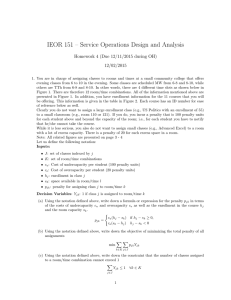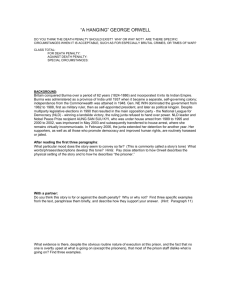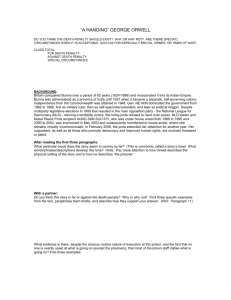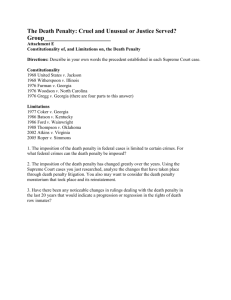IEOR 151 – Service Operations Design and Analysis 12/02/2015
advertisement
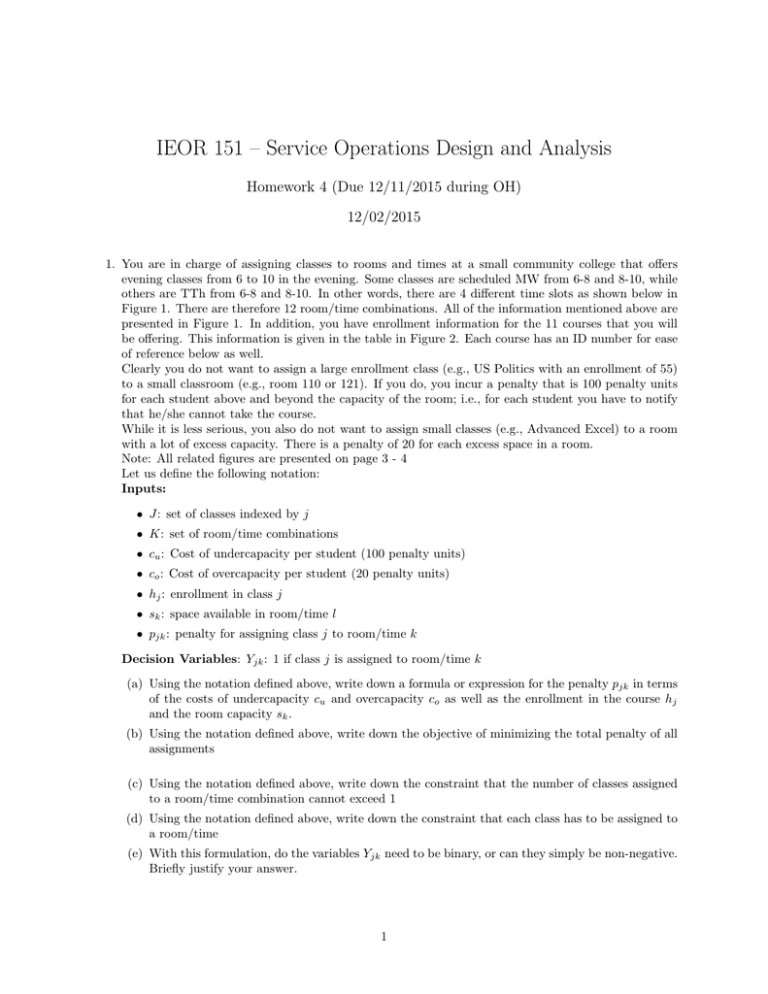
IEOR 151 – Service Operations Design and Analysis Homework 4 (Due 12/11/2015 during OH) 12/02/2015 1. You are in charge of assigning classes to rooms and times at a small community college that offers evening classes from 6 to 10 in the evening. Some classes are scheduled MW from 6-8 and 8-10, while others are TTh from 6-8 and 8-10. In other words, there are 4 different time slots as shown below in Figure 1. There are therefore 12 room/time combinations. All of the information mentioned above are presented in Figure 1. In addition, you have enrollment information for the 11 courses that you will be offering. This information is given in the table in Figure 2. Each course has an ID number for ease of reference below as well. Clearly you do not want to assign a large enrollment class (e.g., US Politics with an enrollment of 55) to a small classroom (e.g., room 110 or 121). If you do, you incur a penalty that is 100 penalty units for each student above and beyond the capacity of the room; i.e., for each student you have to notify that he/she cannot take the course. While it is less serious, you also do not want to assign small classes (e.g., Advanced Excel) to a room with a lot of excess capacity. There is a penalty of 20 for each excess space in a room. Note: All related figures are presented on page 3 - 4 Let us define the following notation: Inputs: • J: set of classes indexed by j • K: set of room/time combinations • cu : Cost of undercapacity per student (100 penalty units) • co : Cost of overcapacity per student (20 penalty units) • hj : enrollment in class j • sk : space available in room/time l • pjk : penalty for assigning class j to room/time k Decision Variables: Yjk : 1 if class j is assigned to room/time k (a) Using the notation defined above, write down a formula or expression for the penalty pjk in terms of the costs of undercapacity cu and overcapacity co as well as the enrollment in the course hj and the room capacity sk . (b) Using the notation defined above, write down the objective of minimizing the total penalty of all assignments (c) Using the notation defined above, write down the constraint that the number of classes assigned to a room/time combination cannot exceed 1 (d) Using the notation defined above, write down the constraint that each class has to be assigned to a room/time (e) With this formulation, do the variables Yjk need to be binary, or can they simply be non-negative. Briefly justify your answer. 1 (f) The solution to the problem is given below in Figure 3: The objective function (total penalty) is 1160. If you stare at this for some time, you will realize that the 2 EXCEL classes are scheduled on different days (Excel Basics on MW and Advanced Word on T Th). The same is true for the two WORD classes (Word Basics on MW and Advanced Word on T TH). The two Excel classes have the same instructor (Ms. Workbook) and the two Word classes have the same instructor (Mr. Paragraph). Both Ms. Workbook and Mr. Paragraph have said they want to teach on one night (either MW or T Th). (They do not have to on the same night, but both of of the Excel classes have to be on either MW or T Th and similarly both of the Word classes have to be on MW or T Th). Formulate linear constraints that will ensure that the schedule meets these requirements. (g) With these additional requirements, will the new total penalty be less than the old penalty, the same as the old penalty, or greater than the old penalty (or maybe something else). Again, briefly justify your answer. 2. Consider Hummingbird Cafe on Euclid in which customers arrive at a rate of 3. The service times are exponentially distributed with mean of 0.08 hours, and there is currently only 1 checkout line. Hint: The probability of a customer waiting in this M/M/1 queue is given by ρ = µλ , λ is the arrival rate, and µ is the service rate. (a) What is the average number of customers in the queue? (b) What is the average time spent in the system? What is the average time spent waiting in line (before service)? (c) What is the probability of a customer having to wait? (d) Suppose the boss would like the probability of a customer having to wait be below 15%. Use the square root law to determine the number of servers he should hire for an M/M/s queue, in order to meet his objective? 3. Exercise 1 on page 504 in textbook chapter 9. 4. Suppose we have µλ = 25, and we would like to have the probability of waiting be at most 5%. Use the square root law to decide the number of services we should have. 2 Figure 1: Room Capacity, and Room/Time Combination Number Figure 2: Course Enrollment Information 3 Figure 3: Optimal Scheduling 4

